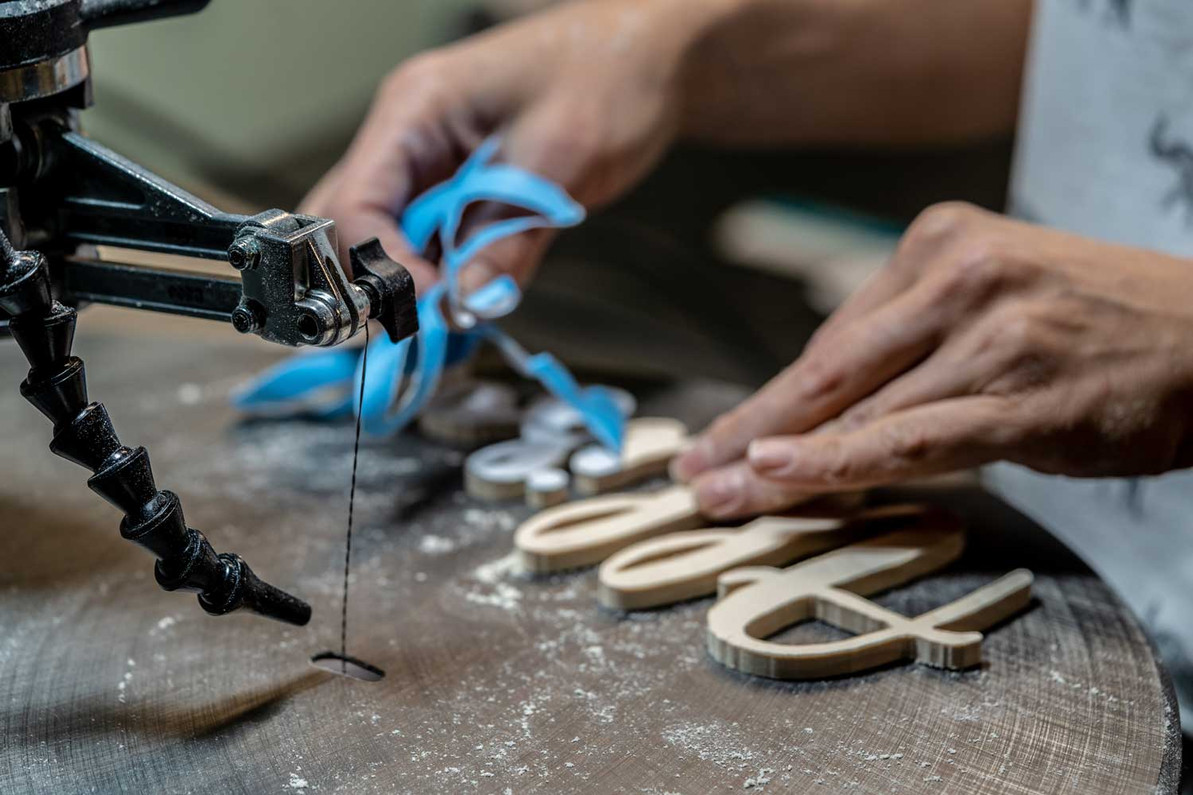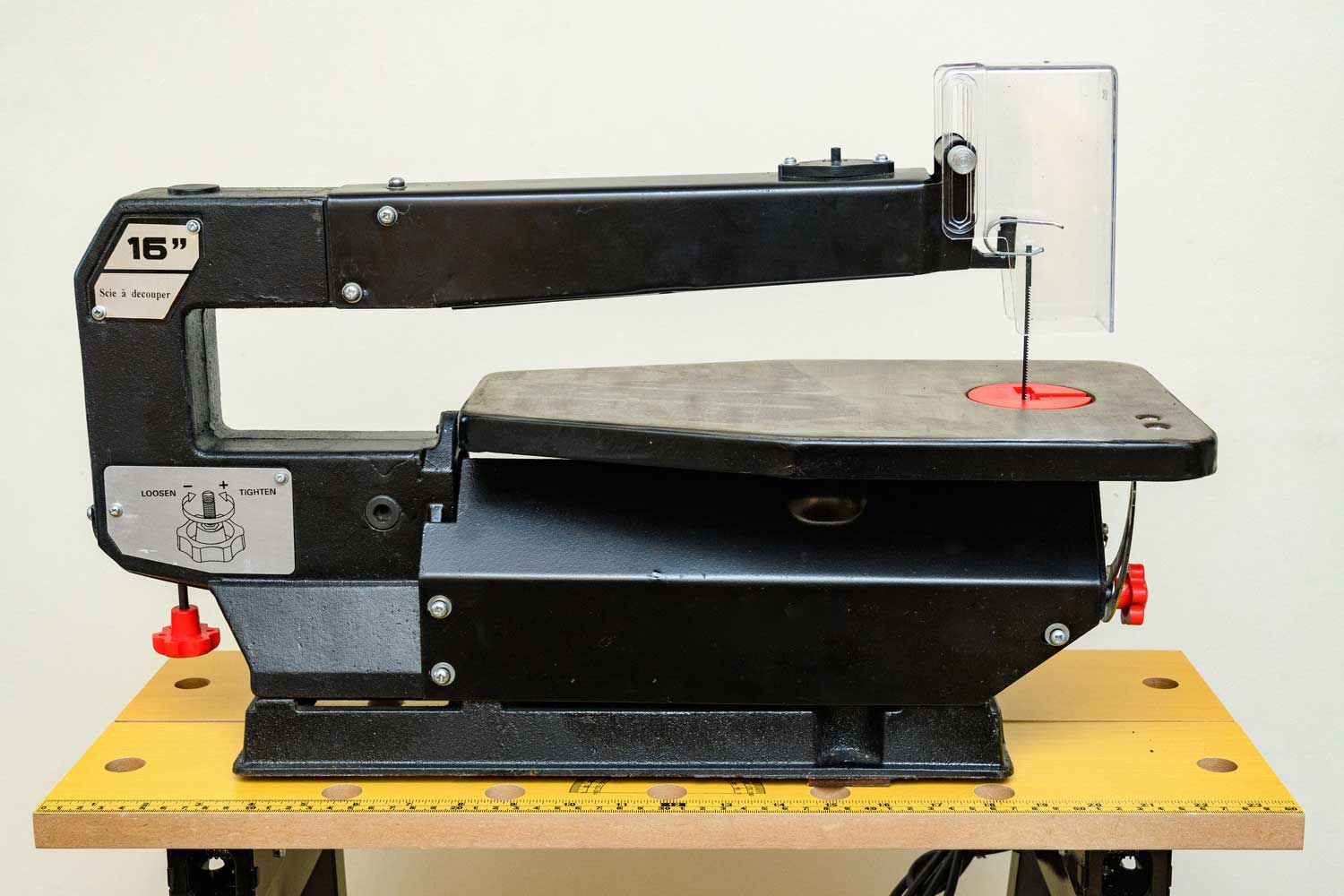The Different Types of Scroll Saw Blades and Sizes
Scroll saw blades come in a variety of sizes and types, each designed for a specific purpose.
The most common type of blade is the plain-end blade, which is available in a range of sizes from 3/0 to 20. These blades are used for general purpose Scroll sawing and are the best choice for beginners.
Another popular type of blade is the pin-end blade, which is wider than the plain-end blade. Pin-end blades are available in a variety of sizes and are often used for coarser work that does not have a lot of fine detail or delicate sawing.
Scroll saw blades can also be categorized by their teeth per inch (TPI). Blades with fewer teeth per inch are best for thicker materials, while blades with more teeth per inch are better suited for thinner materials. The size and type of scroll saw blade you need will depend on the project you're working on. With so many options to choose from, it's easy to find the perfect blade for any task.
Pin End Scroll Saw Blade Sizing
Pin end scroll saw blades are those that are like a regular scroll saw blade but have a pin sticking through each end of the blade. The pin works to hold the scroll saw blade in place in the top and bottom holding mechanisms on a scroll saw.
Pin end blades can be great for doing general cutting and less intricate work. They are available in regular tooth, skip tooth, hook tooth and reverse tooth style blades.
Sizes are not as easy to distinguish as they are on other blades. You can easily tell the difference by reading the specifications. The blades are predominantly made for 5" scroll saws. Look at the width of the blade, thickness, how many teeth per inch, whether it is a skip tooth, regular tooth, or hook tooth, and how big of a pilot hole you need to get the blade through for interior cuts.
Pin end scroll saw blades are a specific type of blade that is designed for use with scroll saws. These blades are significantly different from other types of scroll saw blades, and as a result, they offer several advantages and disadvantages.
First and foremost, pin end scroll saw blades are much easier to change than other types of blades. This is because the pins on the end of the blade fit into corresponding blade chucks on the scroll saw, making it possible to quickly and easily swap out one blade for another.
Additionally, pin end scroll saw blades are less likely to come loose during operation, making them ideal for use in production situations.
Pin End scroll saw blades aren't the best for cutting in intricate areas. Most blades require a 3/16" hole in the wood to slide the blade through for an interior cut. That's pretty large in the scroll saw world.
Finally, pin end scroll saw blades are more limited in sizes and styles than regular plain end blades. sometimes they may be your only option. There are blade chuck kits that allow you to change your scroll saw to accept plain end blades.
Plain End Blades
Plain end blades are slightly different than pin end blades, and there are a few ways to tell the difference. Plain end blades have a smaller diameter at the end that fits into the scroll saw's chuck, and they also have a more sharply pointed tip. The main advantage of plain end blades is that they can be used in scroll saws that have a smaller throat size.
Plain end blades are also available in a variety of sizes, from very small to very large. The size of the blade you need will depend on the thickness of the material you're cutting. While plain end blades are not as easy to install as a pin end in most cases, they are still pretty painless and installing the blade is pretty simple.
Plain end blades are generally made out of high-carbon steel, which is strong and durable. When choosing a plain end blade, it's important to consider the type of cuts you'll be making. If you're doing intricate work, you'll need a blade with a very fine tooth count. For thicker materials, you'll need a blade with fewer teeth.
You should also consider the type of material you'll be cutting. Pin end blades can be used on wood, plastic, and even metal.
When choosing a plain end blade, it's important to select the right size and tooth count for your project. With so many options available, there's sure to be a perfect blade.
Universal Scroll Saw Blade Sizes
Scroll saw blades vary a little from manufacturer to manufacturer. The Universal numbers on plain end scroll saw blades can give you a pretty good idea of what you need for your project, no matter the brand.
All scroll saw blade manufacturers use the same method of numbering with the smallest and thinnest blades for woodworking starting at #3/0 and going up to a whopping #20 in size.
These blades are all the same length at about 5- 5 1/2" for our modern scroll saws or 130mm. The difference comes along when you start looking at how wide the blades are, how thick they are, how many teeth they have and the style of the teeth.
A general rule of thumb is that the smaller the number, the thinner the wood it will cut well. Larger blades can handle thicker material and will handle more aggressive scrolling.
Here's a rundown of the sizes of scroll saw blades and what they are best at:
Universal #3/0
These blades are the thinnest and can fit in a 1/32" hole or a little smaller if you work at it. They are small, super-thin, and fragile.
Use them for veneering and marquetry cuts in thin wood. They work the best in 1/8" material or less. They are predominantly available in skip tooth and double tooth. The smooth cut of the small blade in veneer keeps it from tearing.
Universal #2/0
The 2/0 blades have a few fewer teeth than the 3/0 blades and are a little thicker. They still fit in a 1/32" hole. They work great on veneer and thin woods up to a little over 1/8". You can also use them on softer wood lumber to about 1/2" thick.
There are a wide variety of tooth styles available. If you're doing a lot of fine scrolling, you will probably have a few of these in your shop. These will spin on a dime and you can even get them in spiral blades. You can even get these in special blades like the Ultra designs.
Universal #0, 1 & 2
These blades are great for delicate fretwork, tight radiuses, and precision smooth cuts. Use these blades in softer lumber up to 3/4" thick, plywood and some of the harder thin woods. You'll be impressed with the accuracy of these sizes of scroll saw smaller blades.
Universal #3
The #3 blades are some amazing blades. They work in thin wood to about 3/8", and can do plywood and plastics along with thicker softwoods but have the gusto to do more and last a while.
They are available in all kinds of tooth configurations including crown tooth blades. You'll also find these in precision milled blades that can handle hardwoods to 3/4" and even plastics. The #3 blades can still handle tight radiuses and tons of intricate fretwork. They fit in a 3/64" hole leaving you tons of room to get your sawing done.
Universal #4, 5, 6
These blades are really close in size and are considered mid-size blades. If you're working with hardwoods, these are some go-to blades. They all fit in about a 1/16" hole and are getting into that range of about 15-16 teeth per inch.
They are still great for tight radius scrolling. Softwood will cut like butter. The #5 also comes in precision ground blades in both reverse tooth and double reverse tooth. The precision ground blades can handle more than your standard tooth blades.
You will find that they cut faster, last longer and give a smoother finish without sanding.
Universal # 7
The #7 blades are getting into the larger teeth blades. Some will still fit in a 1/16" hole and with others you'll need to go a little larger.
These blades run in the 11 teeth per inch area and are .045" to .047" wide. They work great in hardwoods to about 3/4" and will slice through softwoods to 1 1/2".
Use them in plywood, mdf, and particleboard. These blades are great for getting a lot of cutting done. The precision-ground blades including the reverse skip tooth blades are something to be reckoned with. The blades cut smooth and are a perfect match for 3/4" poplar and other woods like you'd find in a whirligig.
Universal #9
When you start working with #9 and above scroll saw blades, you are definitely working with a larger tooth scroll saw blade. These are great for general purposes, heavy-duty cutting, and cutting fast. We love the larger scroll saw blades for construction projects that need scroll saw elements.
Many blades including the spiral scroll saw blades go up to a #12. Depending on your scrolling needs you may find a need for these large sizes, especially if you are working on 3-d designs and thicker wood.
Recent Posts
-
Thumb Guards For Wood Carvers Controversy: What to Know
If you're a wood carver, you love nothing more than getting lost in a project, the feeling of woo …May 01, 2023 -
Grinding Wheel for Wood: Types, Tips, and Tricks
'Wood Carving Disc' - three words that will change the way you approach your woodworking projects fo …Apr 22, 2023 -
The Basics of Wood Carving Patterns: A Simple Guide |2023
What's one of the keys to success in wood carving? You guessed it (or probably didn't) - wood car …Apr 20, 2023






